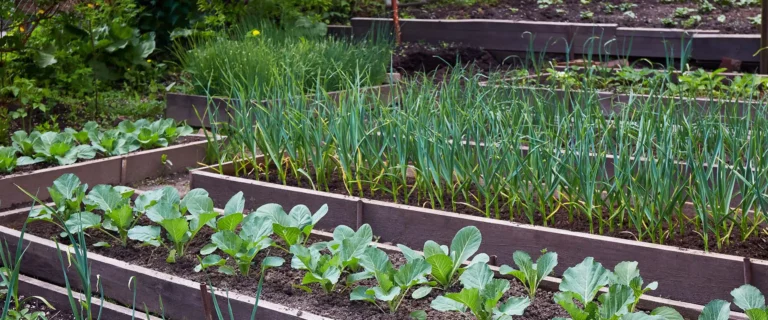It’s mid-November and finally time to say goodbye to vegetable and produce production from our zone 7a gardens. And just as you prepped your garden bed to give your plants the best conditions to thrive and produce, you should also properly prepare your vegetable bed for the winter months.
The Most Important Thing to Consider is Hygiene
If you grow vegetables, you know that they’re prone to lots of different insects and diseases. It’s just the nature of the game, and there are many insects and diseases that will actually hang on to your vegetables. So, if you leave debris in your garden bed, you may also be leaving insects and disease. That’s why it’s very important to get everything out of the vegetable garden as we move from fall into winter.
That includes any stakes you might use to hold your plants. To reuse them next year, you’ll need to wash them, hosing them off and then wiping them down with a solution that’s one part bleach and three parts water.
As for the plants, cut them down so you can assess what’s happening in the root zone. Then get in there and pull the roots out. While some folks like to cut the tops down to the ground level and then let the roots decompose over the winter, for the sake of hygiene, we recommend taking everything out. You can use a garden fork to more easily pry the roots out. Then shake the soil off and get rid of those roots as well as the tops of the plants.
Time to Turn the Soil
Now it’s time to turn the soil. Get in there and really mix it up. If you find any more roots or anything else left behind, get rid of it. Don’t be afraid to be aggressive! Once that’s done, we’re going to add some fertilizer.
Say What? Add Fertilizer?
Some of you may be wondering, why are we putting fertilizer in the bed? We’re not going to be growing anything in there for six months, right?
That’s right. But we can use that time to improve the soil. With fertilizer—and we like Espoma Organic Bio-Tone Starter here at The Gardener’s Center—we can put trillions of soil microbes to work creating nutrients. Soil biology is so important to having healthy plants, and the healthier your soil, the better your plants are going to be next year. So lightly top-dress your garden bed with the Bio-Tone and you’re ready for the last step.
Finally, Add Compost
The next and last thing to do is add compost. We’re a big fan of Coast of Maine Lobster Compost, which we like to use to prep beds for the fall and winter. Add at least an inch, but if you have room for more, well, more is better when it comes to compost. You can smooth it out with your fingers, and then work it into the Bio-Tone you put down underneath it.
Nighty Night, Sleep Tight, Veggie Garden
This process will set your garden bed up for some great soil-biology action so that by next spring, your soil will be a happy, healthy place to start your next vegetable garden. Soil biology is a key component to giving your plants a healthier start, and the Espoma Organic Bio-Tone Starter, coupled with Coast of Maine Lobster Compost is super important.
Have fun putting your garden beds to bed for the winter, and it’s okay if you want to tell them a story…









